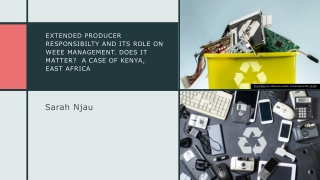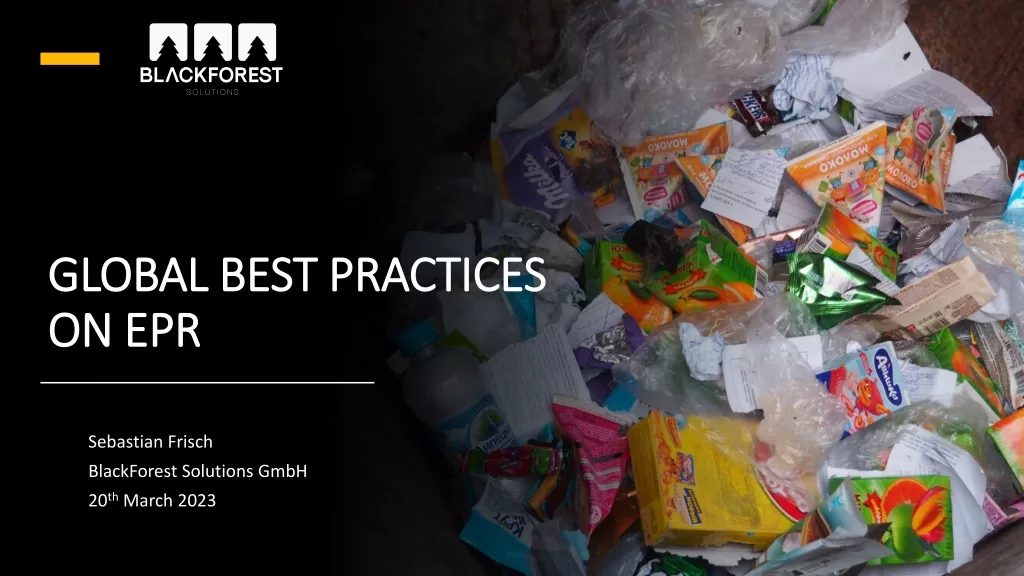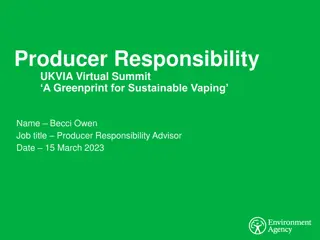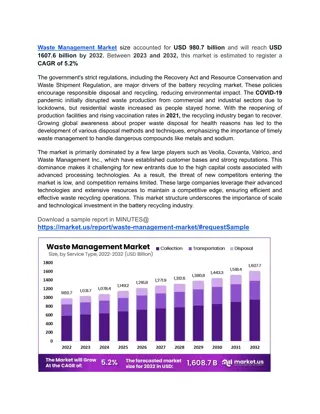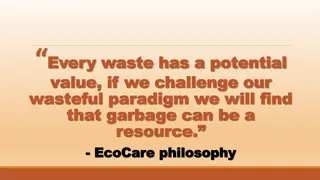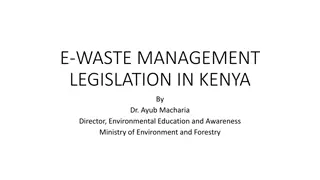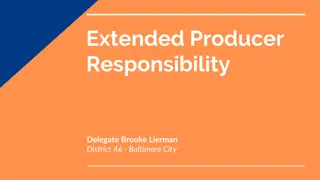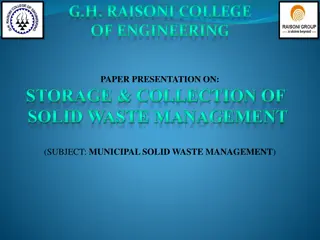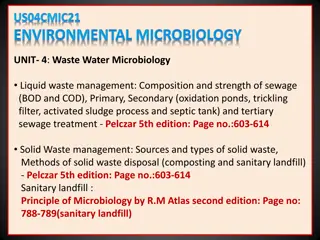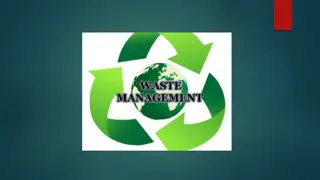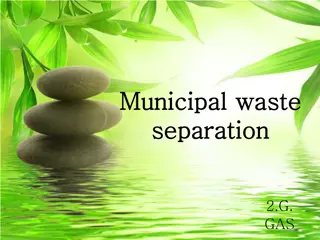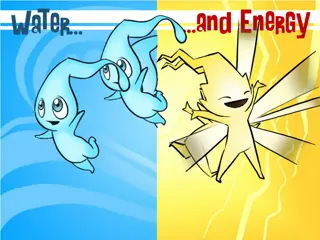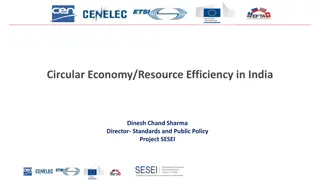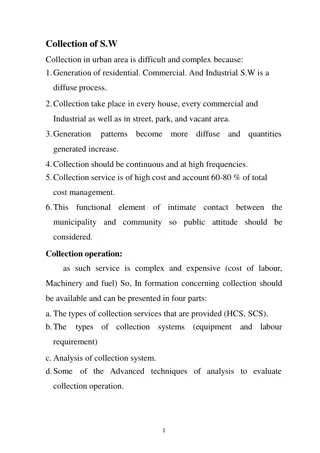Strategies and Challenges in Extended Producer Responsibility for E-waste Management
Extended Producer Responsibility (EPR) in developing countries involves manufacturers taking responsibility for end-of-life products. This entails executing buy-back initiatives, facilitating e-waste recycling, paying government levies, and adopting eco-friendly production techniques. Government plays a crucial role through laws, regulations, oversight bodies, and revenue collection. Challenges include lack of funding, limited public knowledge of e-waste hazards, and inadequate collaborations with stakeholders. Effective strategies include funding models, collaboration with media, and creating collection centers.
Download Presentation

Please find below an Image/Link to download the presentation.
The content on the website is provided AS IS for your information and personal use only. It may not be sold, licensed, or shared on other websites without obtaining consent from the author.If you encounter any issues during the download, it is possible that the publisher has removed the file from their server.
You are allowed to download the files provided on this website for personal or commercial use, subject to the condition that they are used lawfully. All files are the property of their respective owners.
The content on the website is provided AS IS for your information and personal use only. It may not be sold, licensed, or shared on other websites without obtaining consent from the author.
E N D
Presentation Transcript
Effective EPR Strategies: Challenges, Opportunities and Resource Mobilization in Developing Countries Extended Producer Responsibility places the manufacturers at the heart of managing the end-of-life products Producers and Manufacturers of EEE o Execute buy-back initiatives o Facilitate recycling of e-waste o Pay government levies o Establish and maintain recycling centres o Adopt and maintain environmentally friendly production techniques Government: o Laws and Regulations o Oversight bodies (e.g. NEMA) o Revenue collection
Effective Extended Producer Responsibility Providing a check-list of qualifications by producers to benefit from subsidized advertisement Collaboration with the media to enhance awareness and promote buy-back initiatives Creation of interaction lines between producers, marketers and collectors and leading user institutions Active participation of producers in the creation of EPR implementation strategies
Effective EPR Strategies E-waste management funding model that compensates producers for spearheading take-back initiatives Provide additional funds for recycling programs at the collection level through revolving cooperative outfits Creation of collection centres at institutions of higher learning and leading EEE resellers with direct link to producers Devise a national environmental-safety fund to which consumers, collectors and recyclers will contribute to enhance government participation in offering oversight role
Cost-spreading options Television Station firms Newspaper Printing firms Radio Station firms FUNDING POOL FOR EFFECTIVE EPR STRATEGIES Marketers of EEE Recyclers Government
Challenges facing EPR Lack of funding for implementing identified strategies Government-focused strategic interventions Limited public knowledge of e-waste as an environmental hazard coupled with risky informal e- waste collection and recycling sector Lack of Capacity building and awareness by producers Financial insecurity by Producers (profit loss exposure) Lack of inter-stakeholder financial models Inadequate collaborations with leading consumers of EEE e.g. Universities, Media houses Recycling of used EEE from developed to developing countries
Opportunities Of EPR Providing a check-list of qualifications by producers to benefit from tax-free advertisement in local media Introducing regulations that place a demand on media houses, both electronic and print, to run awareness campaigns in collaboration with producers with the aim of encouraging buy-back programmes and safe-recycling options Rewarding compliant primary and secondary producers of EEE for engaging in e-waste environmental through annual national environmental champion awards. Recognition and sensitization of e-waste management as a profitable business venture through creation of e-waste co-operative societies to martial grass-root involvement while inspiring profitability and safety
Action Plan Engage producers actively in the making of strategic plans for e-waste management to reduce resistance in implementation Create mechanisms for producers to empower collectors of e-waste as change agents and cascade basic user disseminated at grassroot cooperative-like formations information levels to through be Creation of multi-level collection centres at Universities (e.g. Maseno University, Multi-Media University and Jomo Kenyatta University of Agriculture and Technology) leading resellers (e.g Safaricom Ltd, Airtel-Telkom Ltd etc) with incentives to motivate participation and regulation by NEMA for compliance Introduction consumers on benefits of buy-back initiatives of trainers to sensitize EEE Collaboration with leading media houses to promote public awareness



